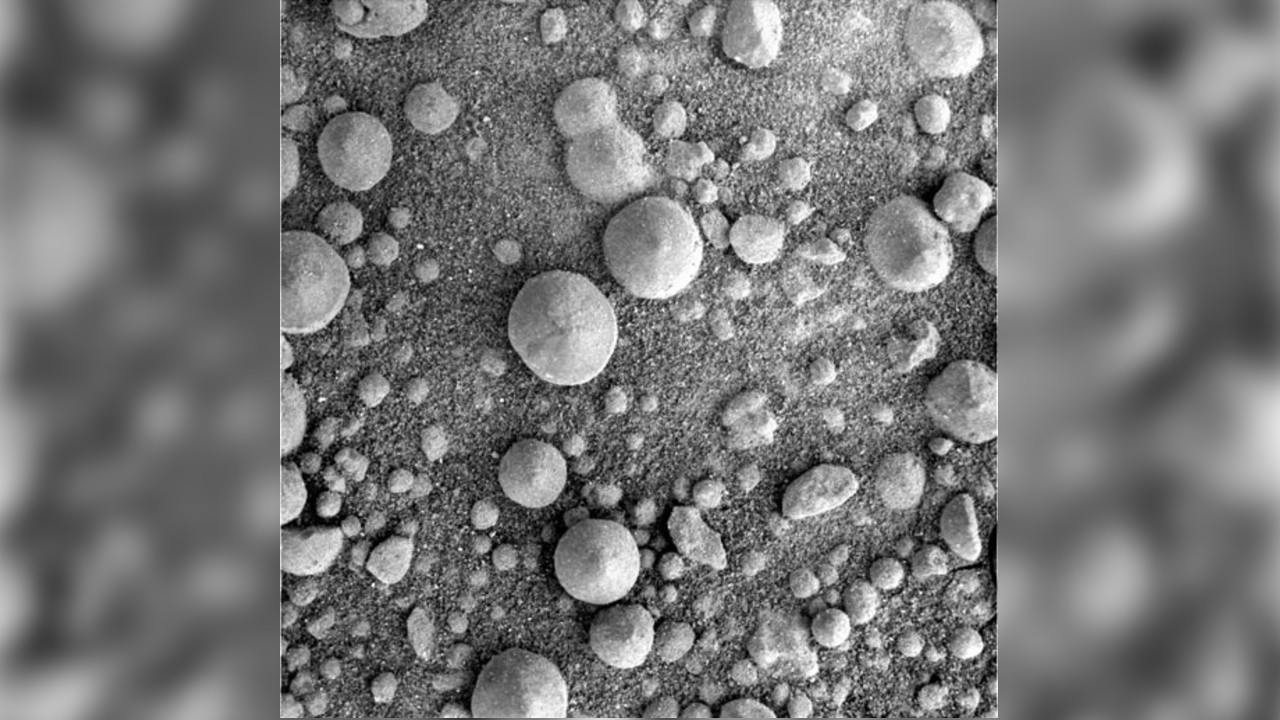Earth rocks collected in 19th century hold clues to finding water on Mars
New research suggests that rocks on Mars could be holding water within them

Rocks found on Earth could hold clues on where to find water on Mars, according to new research from Penn State University.
On Earth, hematite is one of the most abundant minerals on its surface. It can be found in many different igneous, metamorphic and sedimentary rocks and due to a high iron content, it appears a vibrant red color. However, when Peter J. Heaney and doctoral student Si Athena Chen analyzed hematite samples gathered in the 19th century, they uncovered a watery secret within.
Initially, Chen was conducting experiments to artificially crystallize hematite, when she discovered an iron-poor compound. Chen took her findings to Heaney, who uncovered scholars from the mid-1800s that had also reported similar findings but whose work had been dismissed.
Related: Why is there so little water left on Mars?
Those 19th-century scientists, Rudolf Hermann and August Breithaupt, each reported separate discoveries of iron-poor hematite that contained water in the 1840s. Hermann called this discovery "turgite in 1844", while Breithaupt termed the mineral "hyrdohematite in 1847." However, in the early 1900s mineralogists using primitive versions of modern-day diagnostic tools rejected their findings.
Chen and Heaney gathered samples from Hermann and Breithaupts' original studies, which have been stored at the Smithsonian Institution, along with five from Penn State's Frederick Augustus Genth collection for re-examination.
After deciphering the chemical composition of the samples, using infrared spectroscopy, advanced X-ray diffraction and other methods, Chen discovered that the minerals were lacking in iron atoms, but instead included molecules of hydroxyl (a combination of hydrogen and oxygen), which translates to water being stored in the mineral.
Get the Space.com Newsletter
Breaking space news, the latest updates on rocket launches, skywatching events and more!
But how does it help to find water on Mars?

Back in 2004, on NASA’s Opportunity rover discovered mineral concretions affectionately called "blueberries." These rounded rocks were identified by the rovers on-board X-ray diffraction device, as hematite. What the rover couldn’t do was decipher the iron content of the hematite to establish if it was anhydrous hematite (which lacks water) or possible hydrohematite.
Chen's initial experiments were to identify the natural conditions that iron oxides are required to form hematite. She discovered that at temperatures lower than 300 degrees Fahrenheit (nearly 149 degrees Celsius) and in a watery alkaline environment hydrohematite precipitates into sedimentary layers. "Much of Mars' surface apparently originated when the surface was wetter and iron oxides precipitated from that water," Heaney said in a statement.
Heaney also believes the shape of the "blueberries" also offers some clarification. "On Earth, these spherical structures are hydrohematite, so it seems reasonable to me to speculate that the bright red pebbles on Mars are hydrohematite," Heaney said in a statement.
Chen and Heaney's work is detailed in the journal Geology, where they conclude "hydrohematite is common in low-temperature occurrences of iron oxide on Earth, and by extension it may inventory large quantities of water in apparently arid planetary environments, such as the surface of Mars."
Follow us on Twitter @Spacedotcom and on Facebook.
Join our Space Forums to keep talking space on the latest missions, night sky and more! And if you have a news tip, correction or comment, let us know at: community@space.com.

Scott is a staff writer for How It Works magazine and has previously written for other science and knowledge outlets, including BBC Wildlife magazine, World of Animals magazine, Space.com and All About History magazine. Scott has a masters in science and environmental journalism and a bachelor's degree in conservation biology degree from the University of Lincoln in the U.K. During his academic and professional career, Scott has participated in several animal conservation projects, including English bird surveys, wolf monitoring in Germany and leopard tracking in South Africa.









